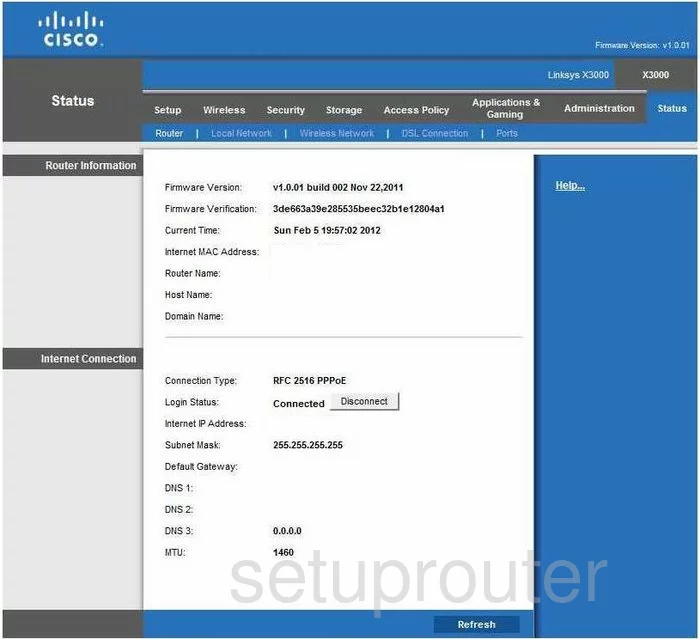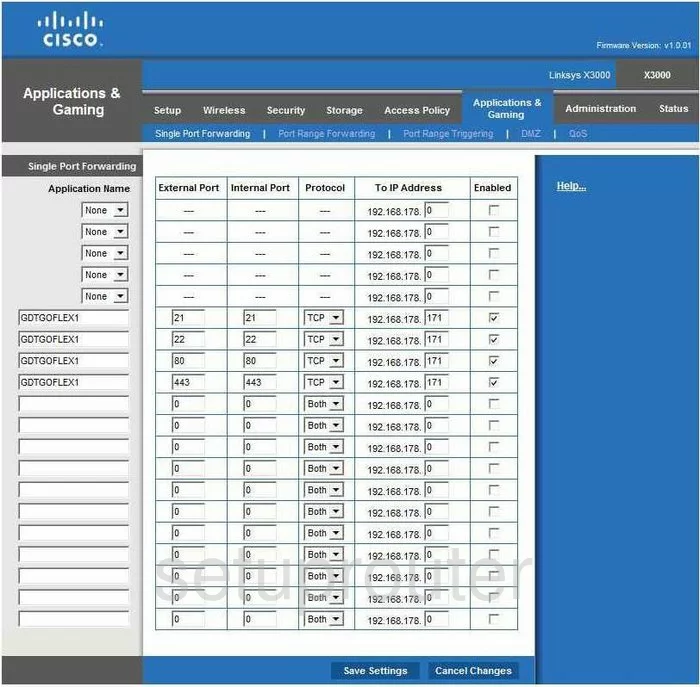This page will show you how to setup a port forward on the Cisco X3000 router.
If you are not sure what port forwarding is you can read our What is Port Forwarding guide to help get started.
Other Cisco X3000 Guides
This is the port forwarding guide for the Cisco X3000. We also have the following guides for the same router:
Configure your Computer to Have a Static IP Address
Port forwarding the Cisco X3000 to your computer can be more reliable if you first configure a static IP address on your computer. We have instructions to setup a static IP address for Windows 7, Windows 8, and a variety of other devices on our Static IP Address Settings page.
Please note that while setting up a static IP address on your computer is optional, it is still a very good idea to go ahead and do it. In the long run it will make your port forward much more reliable.
Login To The Cisco X3000
To get started forwarding a port you need to login to your Cisco X3000 router. If you are already logged in you can skip this step.
To login to the Cisco X3000, follow our Cisco X3000 Login Guide.
Forward a Port on the Cisco X3000 router
Find The Port Forwarding Section of the Cisco X3000

You begin on the Basic Setup page of the Cisco X3000 router. To forward a port, click the link at the top of the page labeled Applications & Gaming.
A new menu appears below that, if you wish to forward only a single port, click the choice of Single Port Forwarding. If you want to forward a range of ports, like 80-100, click the choice of Port Range Forwarding.
Configure the Port Forwarding section of your Cisco X3000
Now to forward a port, make the following changes:

Single Port Forwarding:
In the first empty line of boxes, use the Application Name box to enter the name of the program you are forwarding this port for. This is not crucial to the process, but for your future reference.
Next is the External Port and the Internal Port. Enter the port number you wish to forward in both of these boxes. These boxes need to match.
Use the Protocol drop down menu to choose the type of protocol you want to use.
Next is the To IP Address Enter the LAN IP Address of the computer or device you want to forward this port to.
Last in line is the Enabled box. Place a check mark here.
Finally, click Save Settings at the bottom of the page.
Port Range Forwarding:
The steps are exactly the same as above, except when entering the port numbers, enter the lowest number of the range in the Start box, and enter the highest number of the range in the End Port box.
Continue to follow the steps lined out above, and click Save Settings when you are finished.
That's it!
Test if Your Ports are Open
Now that you have forwarded ports on the Cisco X3000 you should test to see if your ports are forwarded correctly.
To test if your ports are forwarded you should use our Open Port Check tool.
Other Cisco X3000 Info
Don't forget about our other Cisco X3000 info that you might be interested in.
This is the port forwarding guide for the Cisco X3000. We also have the following guides for the same router: